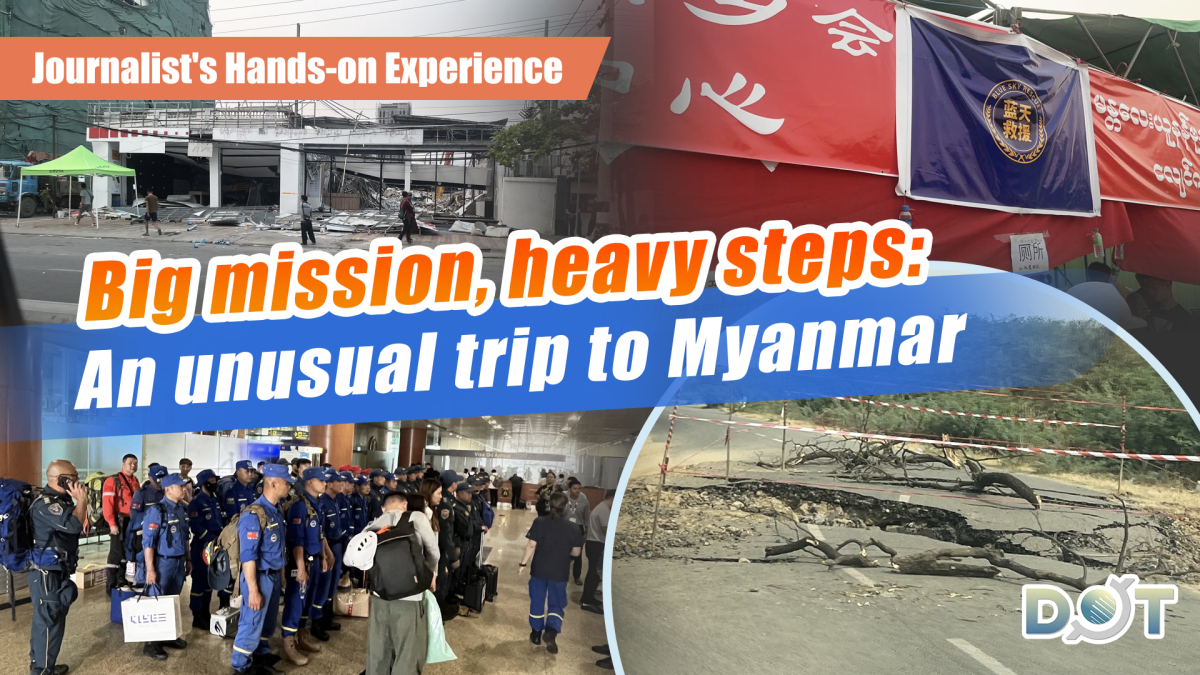
As the plane crossed over land and entered the Andaman Sea, I knew we had reached Myanmar's airspace. Before this trip, I'd heard and seen countless stories about Myanmar—some unsettling, others awe-inspiring. My emotions swirled: nervousness, trepidation, and a flicker of curiosity for the unknown.

The plane touched down at Yangon's airport. The cabin door opened, and a wave of brutal heat rushed in to greet me.

After completing our visa-on-arrival formalities, we dove into a flurry of urgent tasks. Once all documents were sorted, we waited in the arrivals hall for China's Blue Sky Rescue Team. When their plane landed on the tarmac, I steadied my camera with jittery anticipation, ready to capture their arrival. Passengers disembarked first, and only after the crowd thinned did the rescue team emerge in disciplined formation.

The moment I saw them, an unexpected lump rose in my throat. But as a documentarian, I had no time to dwell on emotions—I needed to immortalize this scene. Their determined attitude compelled me to freeze every face, every gesture, into frames.

The next morning, we set off early for Mandalay. Myanmar's highway from Yangon reminded me more of China's provincial roads. As we neared Mandalay, cracks spiderwebbed across the asphalt. Some fissures had fresh patches, while smaller ones snaked unchecked, hinting at future fractures. The worst gaps stretched two to four fingers wide—neglect them, and disaster would follow. Closer to the city, the ground began to undulate, forming miniature canyons where the earth split unevenly.

After 13 grueling hours, we entered Mandalay with a mix of exhilaration and unease. Crumbling buildings lined the outskirts. While the city's damage wasn't as catastrophic as rumors suggested, certain structures stood as grim reminders—collapsed roofs, walls sheared diagonally. My mind recoiled from imagining their final moments during the quake.
A silver lining: not all buildings were beyond repair. Pre-trip images had led me to expect a wasteland, but reality showed resilience amid ruin. The true heartache lay in the families huddled under makeshift tents along debris-strewn streets.

Our first stop was the Mandalay Yunnan Association of Myanmar, a community of Burmese-Chinese tracing roots to Yunnan merchants. In their compound, a large temporary tent housed Blue Sky Rescue Team's command center, flanked by volunteer teams, medics, and supply units. Stacks of water and relief materials filled the camp.
After a briefing with a team leader, urgent news arrived: signs of life detected in a rubble pile away from the camp. Within minutes, we were en route. Little did I know we'd spend eight relentless hours there.

That day and a half assaulted both my eyes and soul. I witnessed nature's terrifying might as well as humanity's luminous compassion—experiences etched permanently into memory. Before leaving Mandalay, we donated the remaining supplies to refugees on the roadside.
During the return trip to Yangon, I stared blankly at the now-repaired highway. The Burmese driver chewed betel nut as the overworked AC struggled against the scorching sun. My mind, however, still lingered in Mandalay's ruins. By the time I snapped back to reality, our plane had already left the Andaman Sea behind.

The mission was over. Life has to go on.
Though the tension had eased, my heart remained taut like an overstretched rubber band—slow to regain its original shape. Even as Myanmar faded below the clouds, the journey stayed vivid for me.
(Reported by Jack Wang; English editor: Darius)
Related News:




















Comment